The biggest gun ever designed could have been used to put Iraq at the centre of space exploration but it was not to be. There are two huge steel pipes bolted together projecting high into the air on permanent display in the Royal Armouries’ collection at Fort Nelson, Hampshire. These pipes are one of the few remaining pieces of a supergun called Big Babylon, which could have fired satellites into orbit from a 156 m long barrel embedded inside a hill.
Gerald Bull, its Canadian inventor was one of the world’s leading artillery experts and hoped it would revolutionize space launches. “Bull was an outstanding scientist and a charismatic figure, and this is the physical reminder of what he did on a monumental scale,” says Nicholas Hall, Keeper of Artillery at the Royal Armouries.
However, Big Babylon was never built and nobody has ever come close to building it ever since. Bull chose to work with Saddam Hussein when he could have worked with anyone and this decision got him killed and it is still unknown if his idea would have worked.
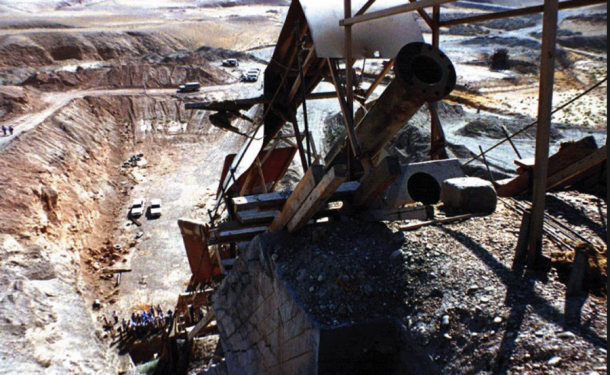
In the 1960s, Bull began to work with the Canadian and US governments researching supergun technology. His designs were used to test supersonic flight by firing projectiles through the barrel of a large gun. Even though he spent most of his life was spent in government-funded weapon research designing rockets, his dream was to launch satellites.
“Low cost was the concept, at least,” explains Andrew Higgins, a professor at the Department of Mechanical Engineering at McGill University, Canada. “Rather than throwing away the first stage of a rocket, using a large gun for the first stage would enable this hardware to be reused and easily serviced.”
Bull began working on the High Altitude Research Project (HARP) in 1961, a joint venture between the US and Canadian governments. Bull and his colleagues fired weather probes into sub-orbit using ex-Navy guns. Even though the project was shut down in 1967, it gave Bull the idea of a satellite-launching supergun or spacegun.
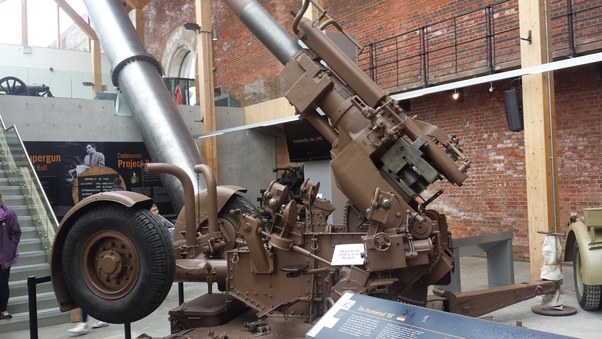
This would save the costs of the expensive rockets used by removing the need for multiple stages. The Harp launch guns could reach 2km/s, explains Higgins, and if you used gas to power the projectiles, you could go much faster. “They really replace the first 1.5 stages of a conventional launch vehicle,” he says.
You might think that no satellite could survive the huge g-force of acceleration of a spacegun launch, but this is “often over exaggerated”, according to Higgins. “Military artillery shells today have GPS and laser-guidance optics and electronics that survive these accelerations, so it can be done. Obviously, not everything can be launched this way, but gun launch is well suited for launching fuel and building materials.”
“Punching through the lower (denser) part of the atmosphere at high speed is an intense heat transfer problem, but ablative coatings and heat shields on the nose of the projectile should be up to the job. One of the main downsides would be the sonic boom, an environmental, or even political, concern.”
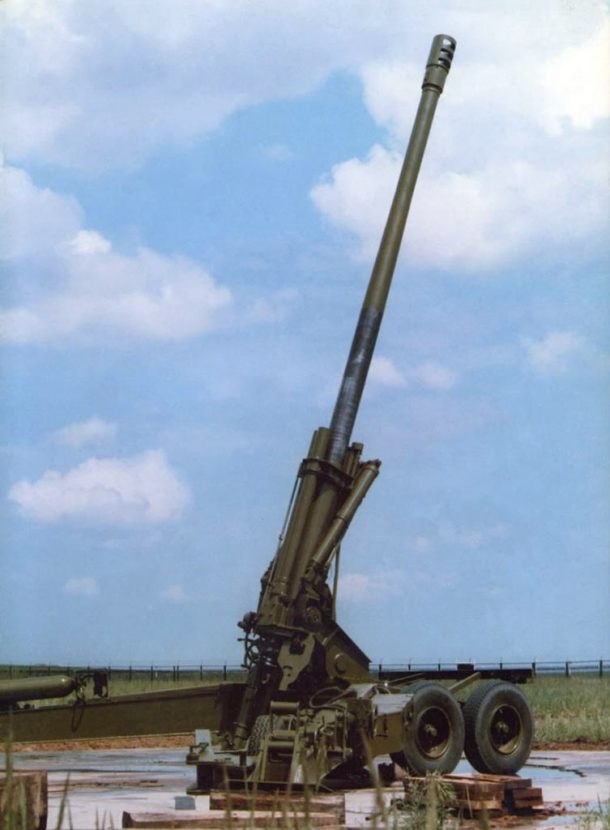
Bull was convinced his designs would work but nobody was willing to provide the funding so he began to sell weapons to generate funds. He set up a private company and began selling arms to the South African government. He was arrested in 1976 for violating the UN arms embargo and spent six months in prison. He began selling to South Africa again after his release and was fined $55,ooo for international arms dealing.
Tired of the meddling of the governments, he moved his work to Brussels, Belgium and began operating there. The Iraqi government contacted Bull in 1981 to design artillery for them. Saddam Hussein was the defence secretary at the time and he took a special interest in him.
“He was particularly interesting to Hussein because he could help him with their artillery problems,” says Hall. “At the time, working with Iraq wasn’t such a strange decision because they weren’t a threat to the West. Hussein wanted to be the leader of the Arab world and show his success with their technology. He did wish for some sort of space programme, so this would have appealed to Bull. He was a great catch for Hussein as an expert.”
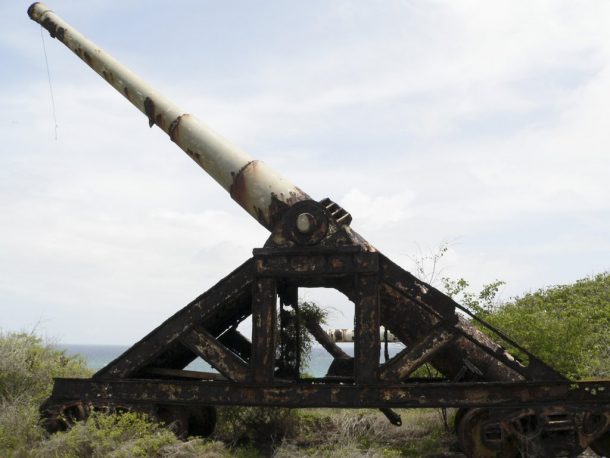
The Iraqi government paid Bull $25 million to begin the project Babylon on the condition that he continued to work on their artillery. Using nine tonnes of special supergun propellant, Big Babylon would have been theoretically capable of firing a 600kg projectile across 1,000 kilometres, putting Kuwait and Iran well within striking distance from inside Iraq. Alternatively, the gun could be used to launch a 2,000kg rocket-assisted projectile carrying a 200kg satellite. The full-size Big Babylon barrel would have been 156m in length and it would have weighed 1,510 tonnes.
To do this would have required an enormous charge. “One very considerable technical problem with a gun of this size is how you ignite the charge,” says Hall. “It burns quickly, but with such a long barrel you need a sustained release. This means you need to solve some far more complicated calculations than with smaller types of artillery.” He believes Bull could have worked it out though.
“We know roughly what the projectiles would have looked like. Something similar to an anti-tank round, where the projectile is housed in a light-weight casing which falls away at the muzzle of the gun. Beyond that, we don’t really know.”
If it had succeeded, the Big Babylon would have been the cheapest method to launch satellites. Adjusting inflation, it would have cost $1,727 per kg as compared to $22,000 per kg today.
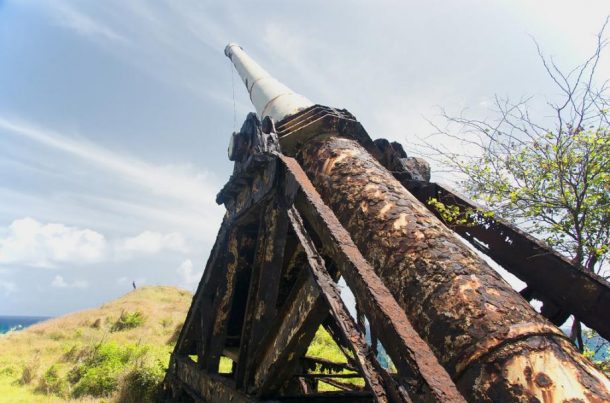
Bull was aware of the fact that it could be used as a weapon by Iraq but he justified his actions by pointing out that it would have been an impractical one. It was so huge in size that it could not be moved. It only pointed in one direction and was very slow to fire. It would have been easy to locate and destroyed if anyone wanted to. “It was completely vulnerable to air attack,” says Hall. “You couldn’t move it. But of course, when one allows one’s brain to think about what Hussein then did, it’s tempting to consider it as a military threat.” Everyone would have immediately known when the gun would have been fired as it would have registered as a major seismic event around the world.
It’s possible, of course, that the Iraqi government wanted the weapon despite its weaknesses. “It was meant for long-range attack and also to blind spy satellites,” General Hussein Kamel al-Majeed, who supervised Iraq’s weapons development programme, is quoted as saying after he defected to Jordan to work with the United Nations. “Our scientists were seriously working on that. It was designed to explode a shell in space that would have sprayed a sticky material on the satellite and blinded it.”
A smaller version of Big Babylon called Baby Babylon which was a 45-metre long prototype gun was completed by May 1989 and was mounted on a hillside to begin testing. However, it all went downhill from there. Bull was shot thrice in the back and two times in the head on March 22, 1990, as he entered his Brussels apartment. There were no witnesses and the killer was never identified. The New York Times reported that when police arrived at the scene they found the key still in his door and his unopened briefcase containing nearly $20,000 in cash.
It is still not known who killed him but his death has been linked with Mossad, US, UK, and South African intelligence services, as well as Iraq themselves. The project Babylon went cold after his death and shortly after Iraq invaded Kuwait which ended the Western involvement with the Iraqi regime.
Many have tried to replicate the superguns but none ever came close and it is doubtful that we will see such guns in the future. Even if the physics supports them, people will be reluctant to get involved due to the stories linked to them. With Elon Musk making reusable rockets, people have stopped started thinking about them and are focusing more on getting to Mars.


